PAINTING: The first hour will be devoted to paintings from three aspects of the Christian story, as painted by Raphael, Bellini, Leonardo da Vinci, and others. The picture group below (click for enlargements) shows one picture of each type, in relatively simple renderings by the 15th-century painter Fra Angelico. The three subjects, and a thumbnail summary of the doctrine they represent, are as follows:
Madonna and Child. A devotional rather than a narrative picture, reflecting the belief that Jesus Christ was the Son of God, born of a mortal mother, the Virgin Mary.
The Annunciation. Further to that belief, the moment when the Archangel Gabriel comes to Mary to tell her that she has been chosen as the mother of Jesus. The Holy Spirit is usually represented as a dove.
The Last Supper. The Passover seder celebrated by Jesus and his disciples on the evening of his arrest and subsequent crucifixion. Christians in the Mass reenact the ceremony of breaking bread and sharing wine as symbols of Christ's sacrifice of his body and blood to redeem mankind.



MUSIC: In the second hour, which I'm calling "Sacred Surprises," we will look at some
sacred vocal music by Bach, Vivaldi, Pergolesi, Haydn, and Rossini, to consider what makes music sacred rather than
secular. Since I want several of these clips to come as a surprise, I am not offering any previews here.
PEOPLE: Here are brief bios of the artists we shall consider in the class, listed in order of birth. You can access all biographies via the BIOS link on the syllabus page.
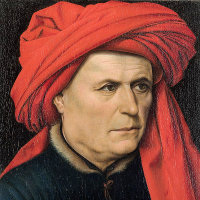 |
Robert Campin, 1375–1444. Netherlandish painter. Campin has gradually emerged from scholarly shadows as the probable painter of a handful of works previously attributed to a conjectural "Master of Flémalle." In spite of the still-uncertain identification of many works associated with him, there is no doubt of his status as a key figure in the transition of Northern art from Gothic traditions to modernity. |
 |
Guido di Piero (Fra Angelico), 1395–1455. Florentine painter. He is first recorded as a painter in 1417, and by 1423 had joined the Dominican Order in Fiesole, where he remained all his life, becoming prior in 1450. Although not an innovator like Masaccio, he is noted for the purity of his style, which set the tone for Florentine art of the mid-quattrocento (1400s). He took the name Fra Giovanni, but it is as Fra Angelico (Angelic Brother), and later Beato Angelico, that he is recorded. |
 |
Giovanni Bellini, 1435–1516. Venetian painter. One of a family of artists, he more than anyone was responsible for developing the characteristic Venetian style of painting in layers of oils, no doubt learned from the Flemish masters. This gives his pictures their extraordinary light, whether portraits or religious subjects. |
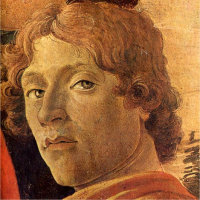 |
Sandro Botticelli, 1445–1510. Italian painter. Botticelli's work was neglected for centuries, but he is now acknowledged as the leading Florentine painter of the later quattrocento. Although he produced numerous religious paintings, he is best known for two large mythological works: Primavera (c.1480) and The Birth of Venus (c.1485). |
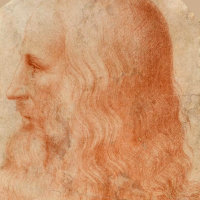 |
Leonardo da Vinci, 1452–1519. Italian painter and polymath. With Michelangelo and Raphael, one of the triumvirate of artistic geniuses that crown the High Renaissance. He trained in Florence with the painter Andrea Verrocchio before moving to the court of Ludovico Sforza in Milan. He spent the last years of his life at the court of François I in France. The naturalism and luminosity of his painting, and his effects of sfumato (or modeling as if by smoke), were widely influential. It is his notebooks, however, that are the best testament to the range of his genius, containing remarkable observations of the natural world, and mechanical inventions centuries before their time. |
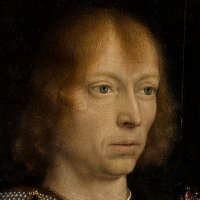 |
Gerard David, 1460–1523. Netherlandish painter. David spent almost all his career in Bruges, taking over Hans Memlinc's mantle as the leading painter in that important art center. He was highly accomplished, but not especially an innovator. |
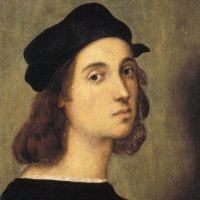 |
Raffaello Sanzio (Raphael), 1483–1520. Italian painter and architect. One of the towering geniuses of the Italian Renaissance, Raphael was born in central Italy, and worked there until 1508, when he moved to Rome to decorate several stanze in the Vatican for Pope Julius II, and later his successor Leo X. The influence of these and other works of the period can be seen in religious art for many centuries to come. He was also one of the many architects of St. Peters. |
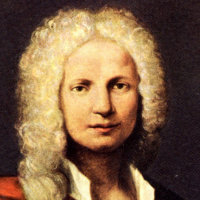 |
Antonio Vivaldi, 1678–1841. Italian composer. Vivaldi, who was ordained as a priest, but lived a largely secular life, was an amazingly prolific composer of music in most genres, including opera, oratorio, and the instrumental concerti on which his later fame mainly rests. |
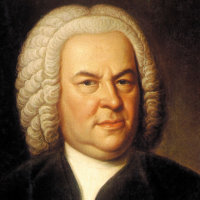 |
Johann Sebastian Bach, 1685–1750. German composer. 1685–1750. The towering genius of German music in the earlier 18th century, Bach was most famous in his time as an organist and choirmaster, most notably at the Thomaskirche in Leipzig. His work includes two Passions, numerous cantatas, and keyboard and orchestral works that codify and extend the possibilities of counterpoint in his time. |
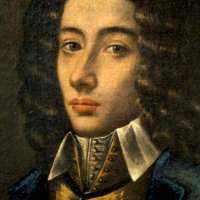 |
Giovanni Battista Pergolesi, 1710–36. Italian composer. Although he died at the age of 26, Pergolesi had already written several operas, including the comedy La serva padrona, and a variety of religious music, most notably his Stabat Mater. His work is noted for its melodic grace and sweetness. More music is attributed to him than he could possibly have written! |
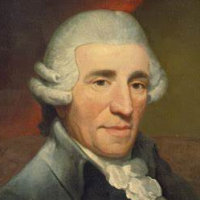 |
Franz Joseph Haydn, 1732–1809. Austrian composer. With Mozart, the leading musical genius of the late 18th century. Equally prolific, but far longer lived, he wrote 104 symphonies, 68 string quartets, 16 operas, and 14 masses, together with the two great oratorios, The Creation and The Seasons. |
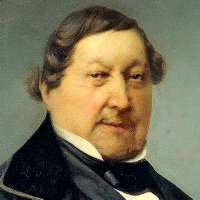 |
Gioacchino Rossini, 1792–1868. Italian composer. Rossini's fame rests on his 39 operas, especially the comedies, all written while he was still in his thirties. In 1829, fter writing Guillaume Tell, one of the foundation stones of French grand opéra, he essentially retired, settling in Paris, and writing only occasional pieces plus his masterpieces of sacred music, the Staba Mater of 1842 and Petite Messe solennelle of 1864. |
 |
Dante Gabriel Rossetti, 1828–82. English painter and poet. A member of an unusually talented and literary family (father a Dante scholar, sister Christina a poet), he hesitated before devoting himself to painting, but then in 1848 became the co-founder and virtual leader of the Pre-Raphaelite Brotherhood, which influenced the course of Victorian art for the rest of the century. Although he became mannered in later life, his earlier works have a remarkable freshness and sincerity. |
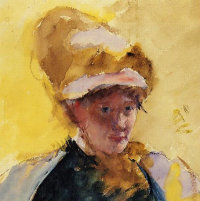 |
Mary Cassatt, 1844–1926. American painter. The daughter of a wealthy Philadelphia family, Cassatt studied in Paris and settled there in 1874. She became friends with the Impressionists, especially Degas, and exhibited in four of their shows. An early feminist, her own work featured especially the everyday lives of women. She also had an influence in persuading her wealthy friends back home to buy Impressionist paintings. |
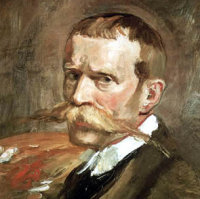 |
Fritz von Uhde, 1848–1911. German painter. Uhde "was a German painter of genre and religious subjects. His style lay in between Realism and Impressionism, he was once known as 'Germany's outstanding impressionist' and he became one of the first painters to introduce plein-air painting in his country." [Wikipedia] |
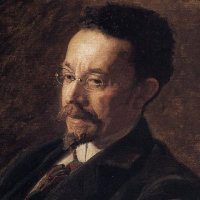 |
Henry Osawa Tanner, 1859–1937. American painter. Born in Pittsburgh, Tanner trained in Philadelphia then moved to Paris in his early thirties, achieving early success in Biblical subjects exhibited at the Salon. He and his wife (also American) settled in France for the remainder of their lives. The recipient of an honorary Légion d'honneur, Tanner is notable as the first African American artist to achieve international renown. |
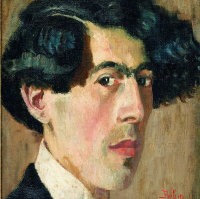 |
Reuven Rubin, 1893–1974. Israeli painter. Romanian-born Rubin studied briefly in Jerusalem, then went to Paris before returning to Jerusalem in 1923. He was thus present long before Israel became a state. His general political views have been inclusionary, as expressed in the deliberately naïve style of his art. |
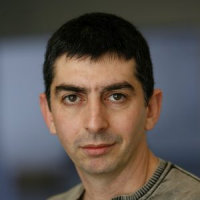 |
Adi Nes, 1966– . Israeli photographer. Nes comes from an family of Iranian immigrants to Israel. He is openly gay, and many of his photographs question Israeli attitudes to manhood and the its cultural traditions. |
ART: The paintings discussed (or intended to be discussed) in the first hour of class are below.
For the music in the second hour, click here.
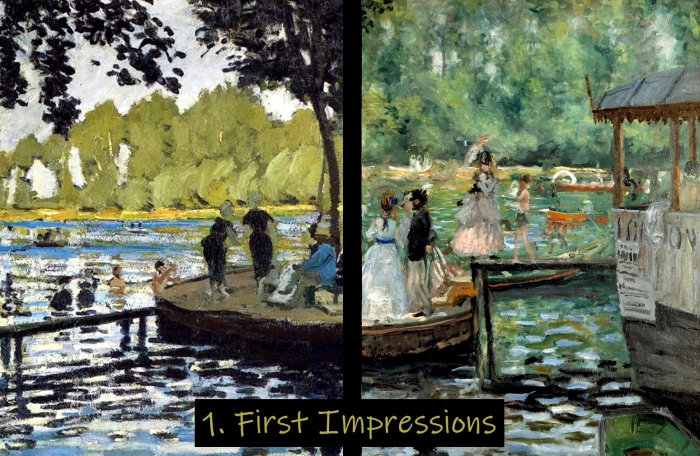
Simone Martini & Lippo Memmi: Annunciation (1333, Ufffizi)
Some facts: The central action of the picture is the Archangel Gabriel kneeling before Mary with the greeting (in Latin), "Hail, full of grace, the Lord is with thee." The dove, representing the Holy Spirit, descends from the ring of angels above. The lily in the jar is a traditional sign of purity. The two flanking figures are St. Ansanus (a patron saint of Siena, for whose cathedral this was painted) and St. Margaret.



Some questions: The similarities are both obvious and surprising: two mothers holding a naked child, both sitting against a low wall with a landscape in the background. What are the differences, in terms of the faces, the clothing, or the paint handling? What makes one religious and the other not? And an off-the-wall question: what is the possibility that our awareness of one picture (or similar) enhances the power of the other?
Some facts: The three-quarter length figure in the front of the picture, as though seen through a window, is characteristic of Madonnas from around this time. Mary's colors of blue (the most expensive pigment) over red are pretty much universal. Mary Cassatt was born in Philadelphia, but spent most of her adult life in France, exhibiting with the Impressionists, then continuing these techniques in her depictions (mainly) of ordinary women engaged in ordinary activities.



Some questions: Which painting is the more realistic? Is every aspect of it equally so? What is the time of year in each? What is the general mood of each landscape? Does either of them contain elements that may have a symbolic meaning?
Some facts: The poppy in the Raphael is probably a symbol of Christ's death and resurrection. It is possible that the other plants have a symbolic meaning also. The most obvious symbolic reference in the Bellini is the similarity of the baby lying in the mother's lap to depictions of the Pietà, or Mary lamenting over the dead Jesus. The bare tree and the crow may have a similar reference. The white bird may be a pelican, traditionally supposed to wound its own breast to feel its young, a parallel both to God the Father and Mary herself. On the other hand, the golden light on the town and landscape suggests spring and new life.



Some questions: Both pictures are set in interiors, different ones; where are they? What does the difference say about each artist's view of Mary? What details in each are symbolic? How does each artist treat the perspective of the space? How do the figures in each picture relate to the scale of their space? What about the implied movement between them?
Some facts: The Campin is a significant work in art history. The draperies of the figures in the space and their presentation in space derive from the Gothic tradition, yet the brilliance of color and richness of detail is something new, due to the discovery of oil painting in the Netherlands, a development that had yet to reach Italy. The picture is chock-a-block with symbolism, in virtually every detail; we may mention the lily, water basin, and linen towel (all symbols of purity), and the guttering candle representing the ending of the Old Testament. The Botticelli concentrates almost entirely on the two figures, within a space that reflects, conversely, the Italian discovery of linear perspective.

Robert Campin: Mérode Altarpiece, with side panels
Some facts: The complete Mérode Altarpiece consists of the center plus two side panels. On the left, we get the donor and his wife. Mary's carpenter husband (still only her fiancé, actually) Joseph is on the right. He is building mousetraps, representing the ultimate capture and defeat of Satan; much has been written about the significance and layout of his tools. The street views in both pictures have been identified as Liège in modern Belgium.



NOTE: The David and Rossetti pictures are already full height. Clicking the image leads to different treatments of the subject.
Some questions: The David version is painted to look like sculpture, but would you describe the figures as stone? Rossetti similarly simplifies his composition, down to the two figures and the dove. Simple though it is, what is the effect and intent of Rossetti's choice of setting? What is the difference between the two Marys in pose and attitude? With the Rossetti Mary in mind, click to reach two depictions from later in the century by African American artist Henry Ossawa Tanner, and another from our own time by James Christensen. How do they represent Mary? What has happened to the Angel?
Some facts: Rossetti was the founder of the Pre-Raphaelite Brotherhood in 1848, a group of artists pledged to return to the simplicity of painting, bright colors, and clear moral messages of the early Renaissance. His title, Ecce Ancilla Domini, means "Behold the handmaid of the Lord," Mary's Biblical reply to Gabriel. His brother and sister (the poet Christina Rossetti) posed for the figures. Henry Ossawa Tanner is cited as the first African American artist to achieve international renown. He spent most of his life in France, and eventually died there, the recipient of the Legion of Honor.



Some questions: Before making any comparisons, it is worth noting that the nature of the two pictures is different. The von Uhde is an easel picture, a framed canvas hung on a wall. The Leonardo, on the other hand, is a fresco covering an entire refectory wall in a monastery, extending the space by its use of perspective. What is the period and setting of each picture? Are the costumes realistic? What is the effect of having Jesus facing out in the one picture and back in the other? Who do we suppose von Uhde's figures to be: the Biblical disciples in modern dress, or some equalivaent brotherhood of his time?
Some facts: Leonardo's fresco has suffered considerable ravages over time, including some misinformed attempts at repair. However, we have a number of drawings and copies that make us pretty sure about the 1999 restoration. The work is also known by its Italian name, Il Cenacolo.



Some questions: Forgetting the differences in medium, what can you say about the people in each picture? Which has the most diverse cast of characters, and is this significant? Who is the figure at the extreme left of the Rubin painting? Why is the younger man in green pointing at him? Are there any other surprising inclusions? How does this differ from a normal seder? While Adi Nes has obviously posed his photograph, is there anything about it that is nonetheless realistic? What can we deduce about the central figure, in the traditional place of Christ?
Some facts: Romanian-born Rubin studied briefly in Jerusalem, then went to Paris before returning to Jerusalem in 1923. He was thus present long before Israel became a state. His general political views have been inclusionary, as expressed in the deliberately naïve style of his art. The publication of Adi Nes's photograph on the front page of the New York Times in 2008 rocketed him to fame. I believe that the central figure may be the artist himself. Writing about this and other Biblical reenactments (see also the example below), he has said, "My staged photographs are oversized and often recall well-known scenes from Art History and Western Civilization combined with personal experiences based on my life as a gay youth growing up in a small town on the periphery of Israeli society."

Adi Nes: Abraham and Isaac (2007)
MUSIC: The script for the second hour is here.
The following are all the available links to the music played (or intended to be played) in class; *asterisked items are
links to the complete work.
Stölzel: Bist du bei mir (Benjamin Appl)
Rossini: Stabat Mater, "Cuius animam" (piano)
Rossini: Stabat Mater, "Cuius animam" (Franco Bonisolli)
Rossini: Stabat Mater, "Cuius animam" (Mathew Polenzani)*
Vivaldi: Stabat Mater, "Cuius animam" (Andreas Scholl)*
Pergolesi: Stabat Mater, "Cuius animam" (Emöke Barath)*
Pergolesi: Stabat Mater, "Quae moerebat" (Philippe Jaroussky)
Haydn: Missa in tempore belli, "Qui tollis peccata"
(Johannes Kammler, staged)*
PEOPLE: Here are brief bios of the artists considered in the class, in order of birth.
You can access all biographies via the BIOS link on the syllabus page.
 |
Robert Campin, 1375–1444. Netherlandish painter. Campin has gradually emerged from scholarly shadows as the probable painter of a handful of works previously attributed to a conjectural "Master of Flémalle." In spite of the still-uncertain identification of many works associated with him, there is no doubt of his status as a key figure in the transition of Northern art from Gothic traditions to modernity. |
 |
Guido di Piero (Fra Angelico), 1395–1455. Florentine painter. He is first recorded as a painter in 1417, and by 1423 had joined the Dominican Order in Fiesole, where he remained all his life, becoming prior in 1450. Although not an innovator like Masaccio, he is noted for the purity of his style, which set the tone for Florentine art of the mid-quattrocento (1400s). He took the name Fra Giovanni, but it is as Fra Angelico (Angelic Brother), and later Beato Angelico, that he is recorded. |
 |
Giovanni Bellini, 1435–1516. Venetian painter. One of a family of artists, he more than anyone was responsible for developing the characteristic Venetian style of painting in layers of oils, no doubt learned from the Flemish masters. This gives his pictures their extraordinary light, whether portraits or religious subjects. |
 |
Sandro Botticelli, 1445–1510. Italian painter. Botticelli's work was neglected for centuries, but he is now acknowledged as the leading Florentine painter of the later quattrocento. Although he produced numerous religious paintings, he is best known for two large mythological works: Primavera (c.1480) and The Birth of Venus (c.1485). |
 |
Leonardo da Vinci, 1452–1519. Italian painter and polymath. With Michelangelo and Raphael, one of the triumvirate of artistic geniuses that crown the High Renaissance. He trained in Florence with the painter Andrea Verrocchio before moving to the court of Ludovico Sforza in Milan. He spent the last years of his life at the court of François I in France. The naturalism and luminosity of his painting, and his effects of sfumato (or modeling as if by smoke), were widely influential. It is his notebooks, however, that are the best testament to the range of his genius, containing remarkable observations of the natural world, and mechanical inventions centuries before their time. |
 |
Gerard David, 1460–1523. Netherlandish painter. David spent almost all his career in Bruges, taking over Hans Memlinc's mantle as the leading painter in that important art center. He was highly accomplished, but not especially an innovator. |
 |
Raffaello Sanzio (Raphael), 1483–1520. Italian painter and architect. One of the towering geniuses of the Italian Renaissance, Raphael was born in central Italy, and worked there until 1508, when he moved to Rome to decorate several stanze in the Vatican for Pope Julius II, and later his successor Leo X. The influence of these and other works of the period can be seen in religious art for many centuries to come. He was also one of the many architects of St. Peters. |
 |
Antonio Vivaldi, 1678–1841. Italian composer. Vivaldi, who was ordained as a priest, but lived a largely secular life, was an amazingly prolific composer of music in most genres, including opera, oratorio, and the instrumental concerti on which his later fame mainly rests. |
 |
Johann Sebastian Bach, 1685–1750. German composer. 1685–1750. The towering genius of German music in the earlier 18th century, Bach was most famous in his time as an organist and choirmaster, most notably at the Thomaskirche in Leipzig. His work includes two Passions, numerous cantatas, and keyboard and orchestral works that codify and extend the possibilities of counterpoint in his time. |
 |
Giovanni Battista Pergolesi, 1710–36. Italian composer. Although he died at the age of 26, Pergolesi had already written several operas, including the comedy La serva padrona, and a variety of religious music, most notably his Stabat Mater. His work is noted for its melodic grace and sweetness. More music is attributed to him than he could possibly have written! |
 |
Franz Joseph Haydn, 1732–1809. Austrian composer. With Mozart, the leading musical genius of the late 18th century. Equally prolific, but far longer lived, he wrote 104 symphonies, 68 string quartets, 16 operas, and 14 masses, together with the two great oratorios, The Creation and The Seasons. |
 |
Gioacchino Rossini, 1792–1868. Italian composer. Rossini's fame rests on his 39 operas, especially the comedies, all written while he was still in his thirties. In 1829, fter writing Guillaume Tell, one of the foundation stones of French grand opéra, he essentially retired, settling in Paris, and writing only occasional pieces plus his masterpieces of sacred music, the Staba Mater of 1842 and Petite Messe solennelle of 1864. |
 |
Dante Gabriel Rossetti, 1828–82. English painter and poet. A member of an unusually talented and literary family (father a Dante scholar, sister Christina a poet), he hesitated before devoting himself to painting, but then in 1848 became the co-founder and virtual leader of the Pre-Raphaelite Brotherhood, which influenced the course of Victorian art for the rest of the century. Although he became mannered in later life, his earlier works have a remarkable freshness and sincerity. |
 |
Mary Cassatt, 1844–1926. American painter. The daughter of a wealthy Philadelphia family, Cassatt studied in Paris and settled there in 1874. She became friends with the Impressionists, especially Degas, and exhibited in four of their shows. An early feminist, her own work featured especially the everyday lives of women. She also had an influence in persuading her wealthy friends back home to buy Impressionist paintings. |
 |
Fritz von Uhde, 1848–1911. German painter. Uhde "was a German painter of genre and religious subjects. His style lay in between Realism and Impressionism, he was once known as 'Germany's outstanding impressionist' and he became one of the first painters to introduce plein-air painting in his country." [Wikipedia] |
 |
Henry Osawa Tanner, 1859–1937. American painter. Born in Pittsburgh, Tanner trained in Philadelphia then moved to Paris in his early thirties, achieving early success in Biblical subjects exhibited at the Salon. He and his wife (also American) settled in France for the remainder of their lives. The recipient of an honorary Légion d'honneur, Tanner is notable as the first African American artist to achieve international renown. |
 |
Reuven Rubin, 1893–1974. Israeli painter. Romanian-born Rubin studied briefly in Jerusalem, then went to Paris before returning to Jerusalem in 1923. He was thus present long before Israel became a state. His general political views have been inclusionary, as expressed in the deliberately naïve style of his art. |
 |
Adi Nes, 1966– . Israeli photographer. Nes comes from an family of Iranian immigrants to Israel. He is openly gay, and many of his photographs question Israeli attitudes to manhood and the its cultural traditions. |
